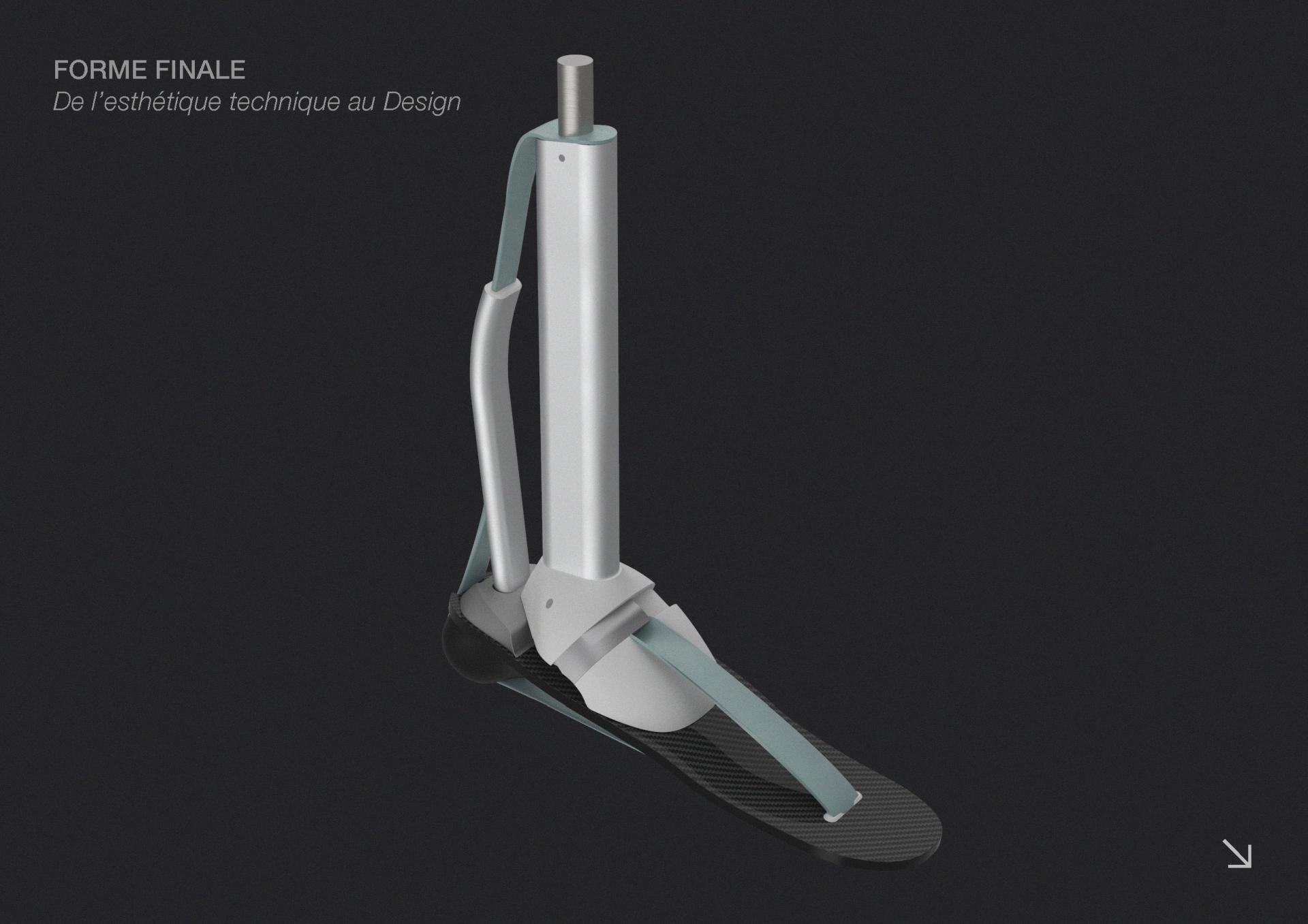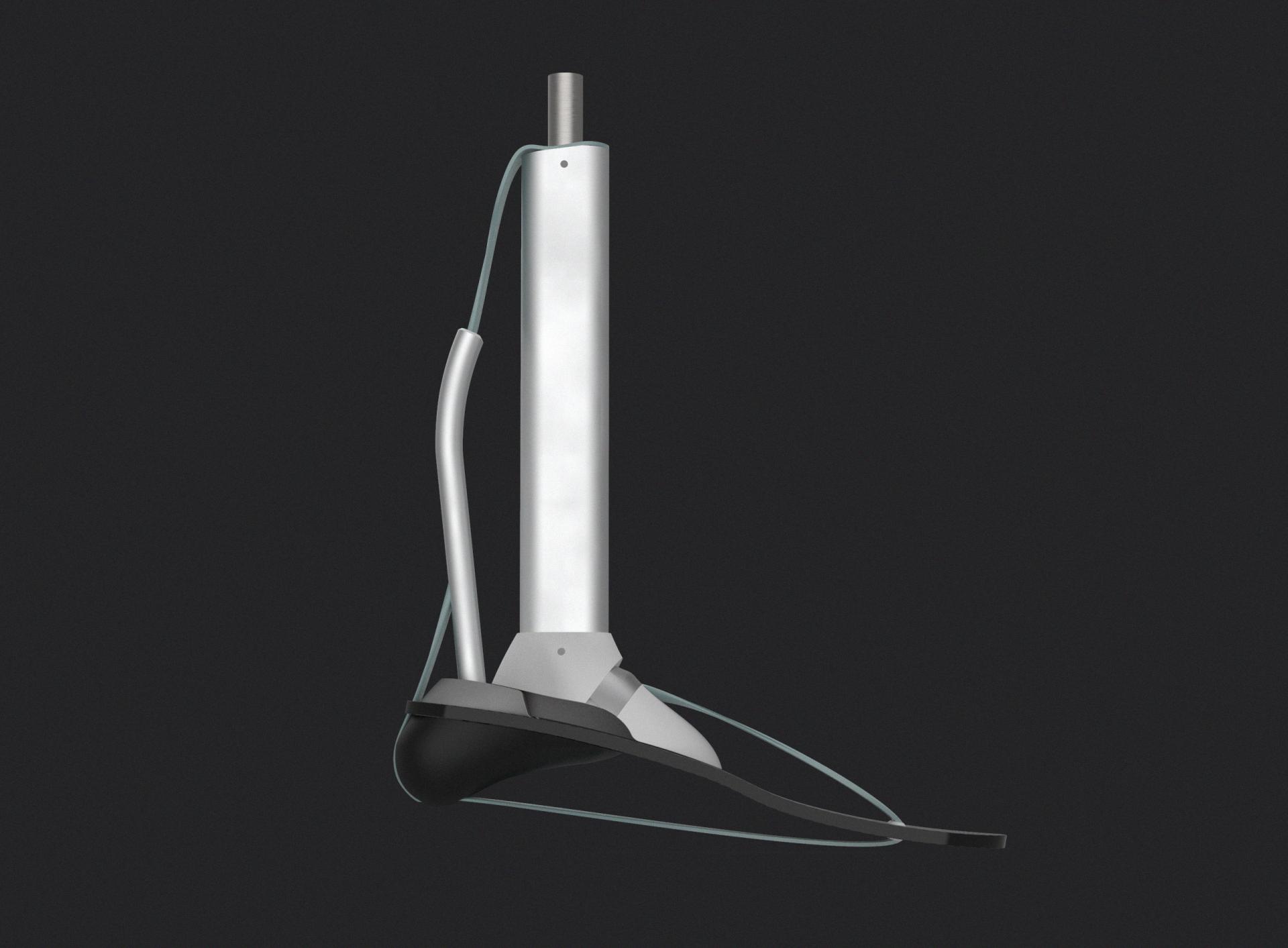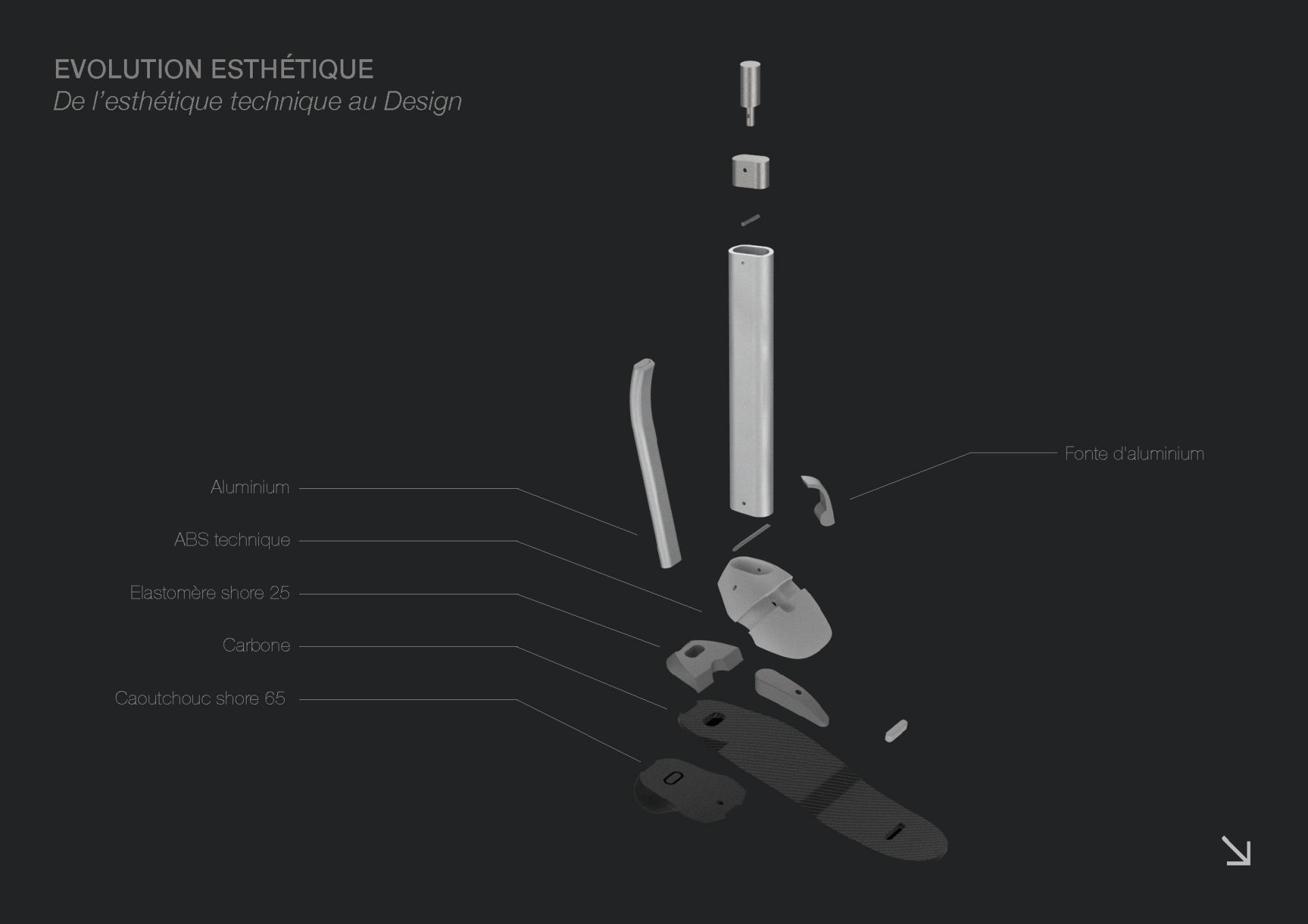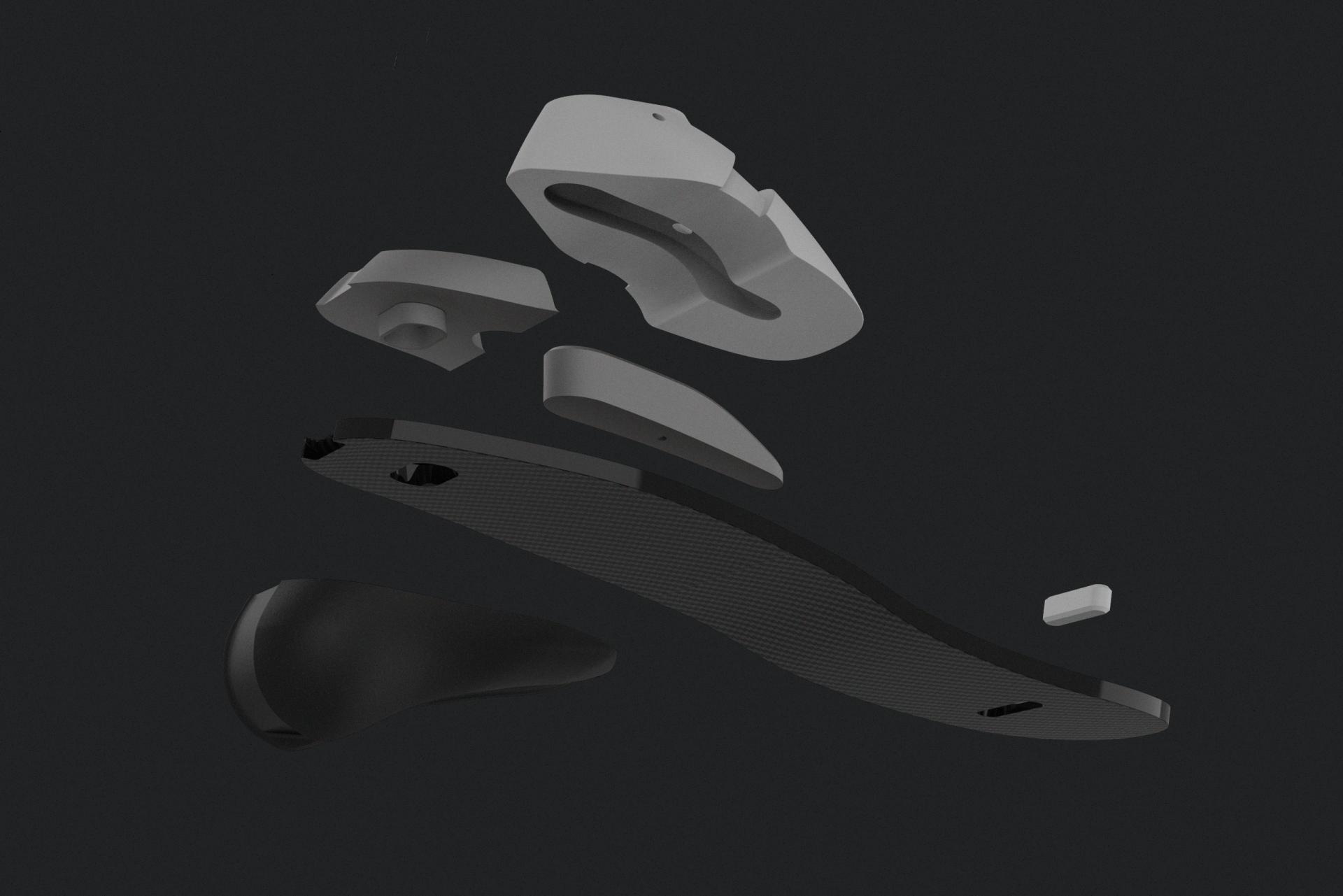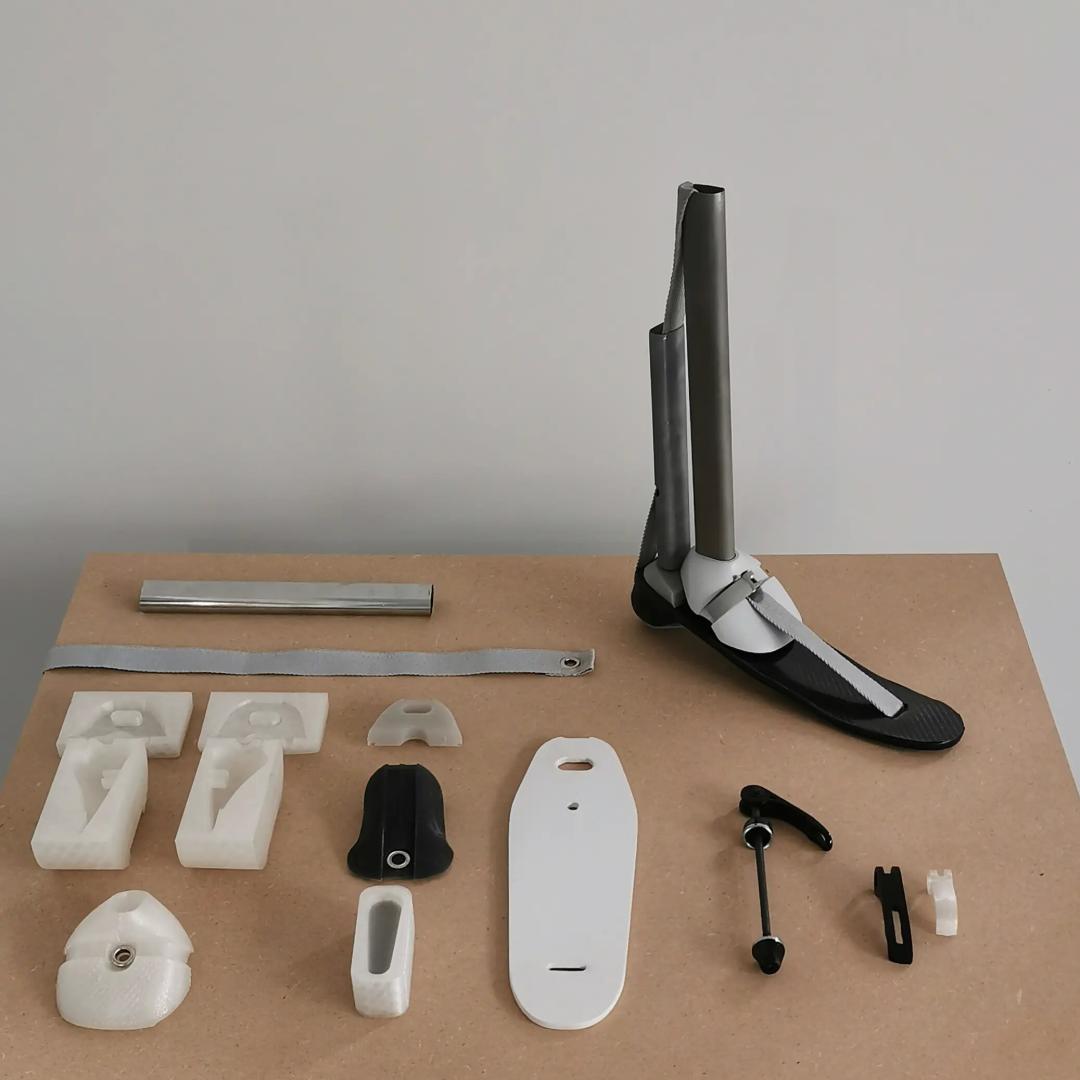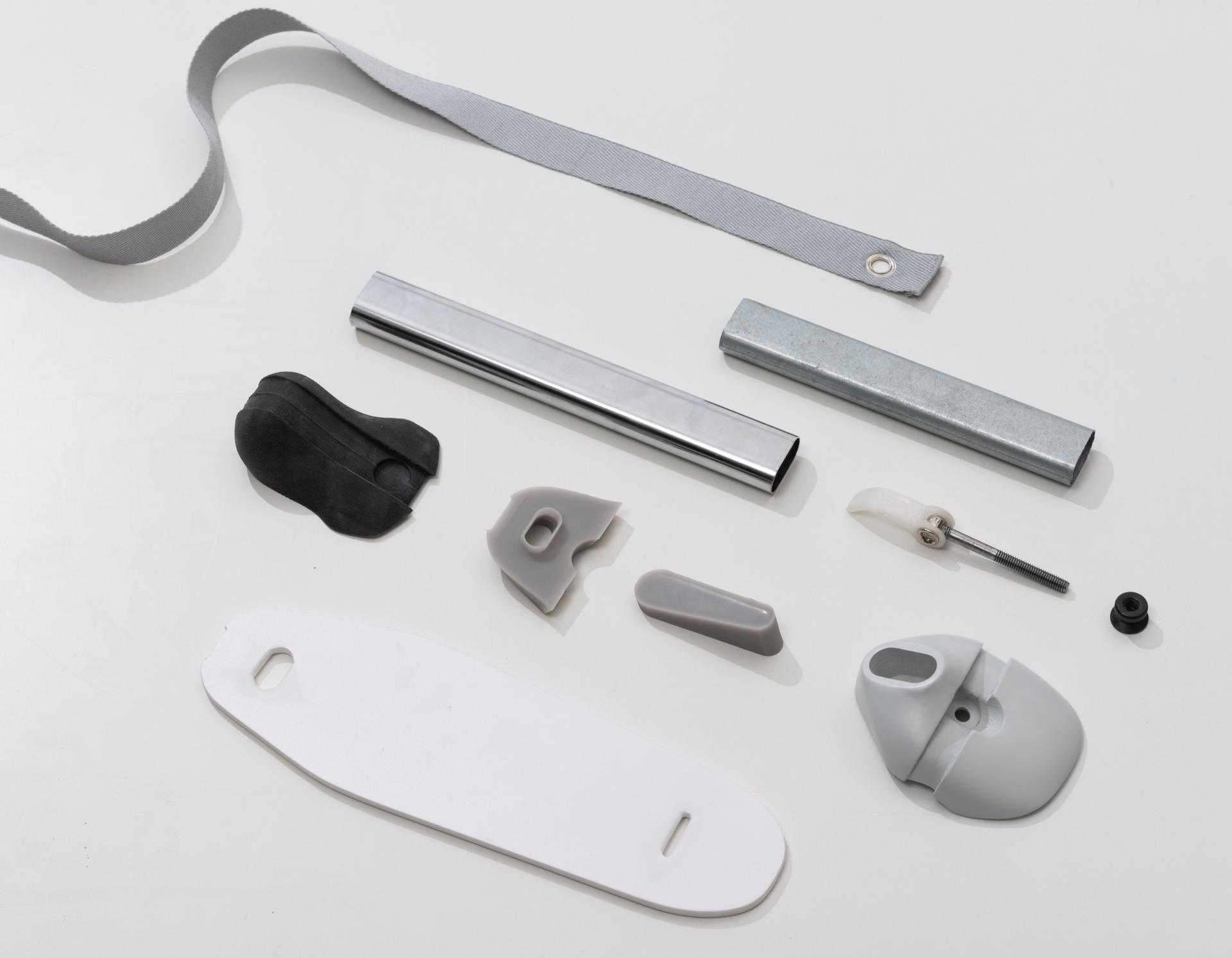FIBULA
Basic information
Project Title
Full project title
Category
Project Description
The connection between socket and prosthetic feet is nowadays achieved by a simple metal tube. However, anatomically, this area corresponds to complex bones (tibia, fibula) that is a major actor, according to the bio-mechanical principle enabling comfortable and dynamic walking. Through bio-inspiration, this project has been developed in order to rethink a more dismountable so adjustable, legible and last but not least affordable tibial prosthetic conception.
Geographical Scope
Urban or rural issues
Physical or other transformations
EU Programme or fund
Which funds
Description of the project
Summary
After extensive research on prosthetic sectors, we have decided to work on a more democratic prosthetic project. We realized the importance of fibula in walking through bio-inspiration concerns. It has seemed intelligent to us then to despecialise performances residing only in prosthetic foot and to redistribute it throughout the entire prosthesis, taking advantage of the gap between tibia and fibula bones. 'Fibula' concept depicts simpler and more homogeneous visual and mechanical characteristics. Thus we have designed a removable and dismountable prosthesis that can be adapted to any wearer personal needs. The whole challenge was to combine components intelligently in order to reduce production costs and to achieve versatile conception as well as allowing its integration to pre-existing parts such as the joints between socket and real prosthetic elements.
Key objectives for sustainability
Nowadays, feet prosthetics have to be replaced every 3-4 years. However, the more confortable models are very expensive and exceptionally covered by social security’s policies. Their cost is mostly due to enclosed conception that makes them unaffordable for most people that need one. Furthermore, because of enclosed system approach, if a piece breaks out or becomes unadapted because of morphological changes, the entire tibial prosthetic has to be thrown away. Dismoutability and adjustability so appear to be key notions as regards to environnemental issues and the call for sustainable solutions. By conceiving a totally dismountable prosthesis, pieces are switchable by the wearer himself, reducing systematic waste of whole prosthetic devices. Tibial prosthesis are also facing various environmental conditions. When it is not adapted to specific outdoor conditions, pieces can be prematurely worn. So adjustability can significatively extends service life of prosthetic solutions and enable its wearer to optimise it depending on practiced environment. Interchangeability provides durability thanks to self-maintenance approach that reduces material loss.
The ‘Fibula’ prosthesis aims to benefits from an agile and smart-circularity from the moment of its production to its real use.
Key objectives for aesthetics and quality
Another consequence of the current approach of tibial prosthesis design is the loss of partial autonomy due to maintenance terms. Only professional osteo-prosthesists are entitled to disassemble en replace prosthetic parts.The ‘Fibula’ prosthesis tends to allow the wearer to re-appropriate this part of its own body. A simpler interfacing between the components pieces provides a better understanding of the entire device. It aims to be an understandable and intuitively manipulable. The bio-mechanical inspiration of the prosthesis explains the presence of a second ‘’tube’’. It reproduces the fibula, conductor of walking and is mainly responsable for its flexibility and confort. As a floating design approach, parts are held together by an anti-friction safety strap that reproduces tendons function and indicates the functional principle of the prosthesis to its wearer and people around. It aims to constitute a fluid and legible visual path that goes through every pieces so that the strap perfectly fits in. The strap integration enables to get closer to a foot volume, both in its thickness and in the shape of the heel to facilitate interaction of the prosthesis with shoes. ‘Fibula’ prosthesis has been designed in order to offer the wearer the choice to use it with or without shoes. It is so inclusive and empowering. Every parts has been developed so as to be symmetrical which drastically reduces production costs.
This results in an aesthetically essential form.
Key objectives for inclusion
In terms of the inclusiveness of our project, it is developed on several levels:
- The first is cost-effectiveness : to design a comfortable, high-performance prosthesis for everyone with an intelligent design, reduces production and replacement costs.
- The second is based on the empowerment of the user with regards to his prosthesis: because it is adaptable and legible, it allows the wearer to understand and to reappropriate it. It refocuses the use on the user expectations who becomes master of his medical device again.
- The third is related to the environment and wearer autonomy: what surrounds us is not adapted to someone who is missing a leg, especially if this environment is variable and discontinuous. Thus the prosthesis has been designed to interact with the preexisting. 'Fibula' concept makes possible to put on shoes and adapt itself to all kinds of terrain, thanks to interchangeable heels.
The last concerns the user: because the body is not constant and is in perpetual movement and evolution, the prosthesis should be able to adapt to it, particularly thanks to a range of ‘shores’ (elasticity degrees) and forms of heels, blade stiffness and strap tension. ‘Fibula’ prosthesis also enables blade sizes switch.
Physical or other transformations
Innovative character
These three dimensions combine in the initial desire to move away from the inegnieric and unfamiliar vocabulary of prosthetic sector, until then it is the only one to express itself.
- By designing a open-system prosthesis, its use becomes more flexible, simpler and more readable forms emerge.
- The resulting legibility and our willingness of adaptability, our prosthesis contributes to the inclusion of users both in their societal acceptance and in the apprehension of their own environments, which then appears again open and full of possibilities.
The difficulty of our approach and what makes it interesting lies in the fact of developing a product considered as reserved for engineers by involving the process of transversal and democratic design, against the current trend of the prosthetic industry.

